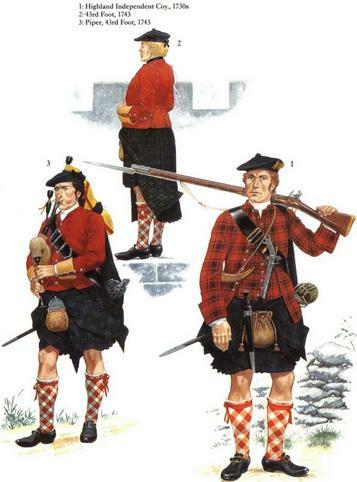|
 Military Records - Introduction Military Records - Introduction
by Robert M. Wilbanks IV, B.A.
Chief Genealogist & Historian, C.S.A.
genealogy@arizonascots.com
War. An unfortunate part of the human condition since the earliest civilizations to the present time. Ever since the beginning of humankind, the need for survival, and differences of opinion, have often led to armed conflict. As nations developed, the purpose of conflicts grew from the basic need for more land and resources, to politics or religion, and to the powerful seeking more power. Over time conflicts escalated in scope and size, and occurred at regular intervals or sometimes continuously. With the discovery of the vast new world, the Americas, the settlers, hoping to escape the constant wars and conflicts in Europe, found themselves threatened by new peoples, as well as their old enemies.
With the formation of armies, wars developed into a bureaucratic process, with the development of extensive records. This article will begin a series of writings about military records as a significantly helpful genealogical resource.
While wars cost the lives of people and the destruction of civilian and government property and records, they also created a new type of record with a potential wealth of genealogical information. Military records can provide details of the soldier, including date and place of birth, occupation, residence, name of parents and/or other family members, physical description, etc., plus information about a soldier’s life before service, during service, or life after military service.
Many young Scottish men were often very quick to join the military. They found service in the military to be an exciting adventure. It also provided them with much of the necessities of life which were difficult to obtain as civilians in Scotland or the New World, and offered the potential to improve their status in life.
 A great number of Scottish served in the British Army from its formation in 1661 up to the present. These Scottish soldiers primarily served in the far reaches of the British Empire. A great number of Scottish served in the British Army from its formation in 1661 up to the present. These Scottish soldiers primarily served in the far reaches of the British Empire.
In the United States as well, the military provided an excellent opportunity for the Scottish.
Many newly arrived immigrants would join when they couldn’t support themselves in a new land, or for the offer of bounty land, or for a quicker way to become naturalized as an American citizen.
Image credit:
weaponsandwarfare.com/2018/07/14/ scottish-soldiers-in-the-eighteenth- century-british-army
Scotland continued to have its own army even after the Personal Union of Scotland with England in 1603 when King James VI of Scotland became the King of England. However, few records were kept, and fewer records exist today. In 1707, the two Kingdoms were united to form the Kingdom of Great Britain. This was a pivotal year for the armies of both Kingdoms, as at that time the Regiments of both Kingdoms were combined to form an entirely new British Army. A better record keeping system went into effect beginning at this time.
There is a great wealth of records for the British Army, housed at the Public Record Office in Kew, Richmond, Surrey, England. Unfortunately, there is no comprehensive, or even partial, index with which to search for a specific individual who served. You have to already know the regiment or ship your family member served in/on. Explaining in detail how to research these records would require more space than I have here. There are numerous guides which can help you learn more about military records as a genealogical resource, including in the form of books, blogs on the Internet, the FamilySearch Wikipedia, YouTube videos, etc.
Meanwhile, as more and more records are becoming digitized, the ability to search records is slowly becoming more prevalent. Websites like FamilySearch, FindMyPast, Ancestry, Fold3 and more, are incorporating military records, lists, etc., for both the United States and for Great Britain, and they are searchable.
I will explain in more detail about British and United States Military Records in future articles.
This is another of a series of articles in which I show you the basics of searching for your family history, discussing the use of family records, public records, and online resources nationally and internationally, etc. The previous articles are now available on the Genealogy Section of this website. See “Genealogy” in the menu options at the top of the web page.
|